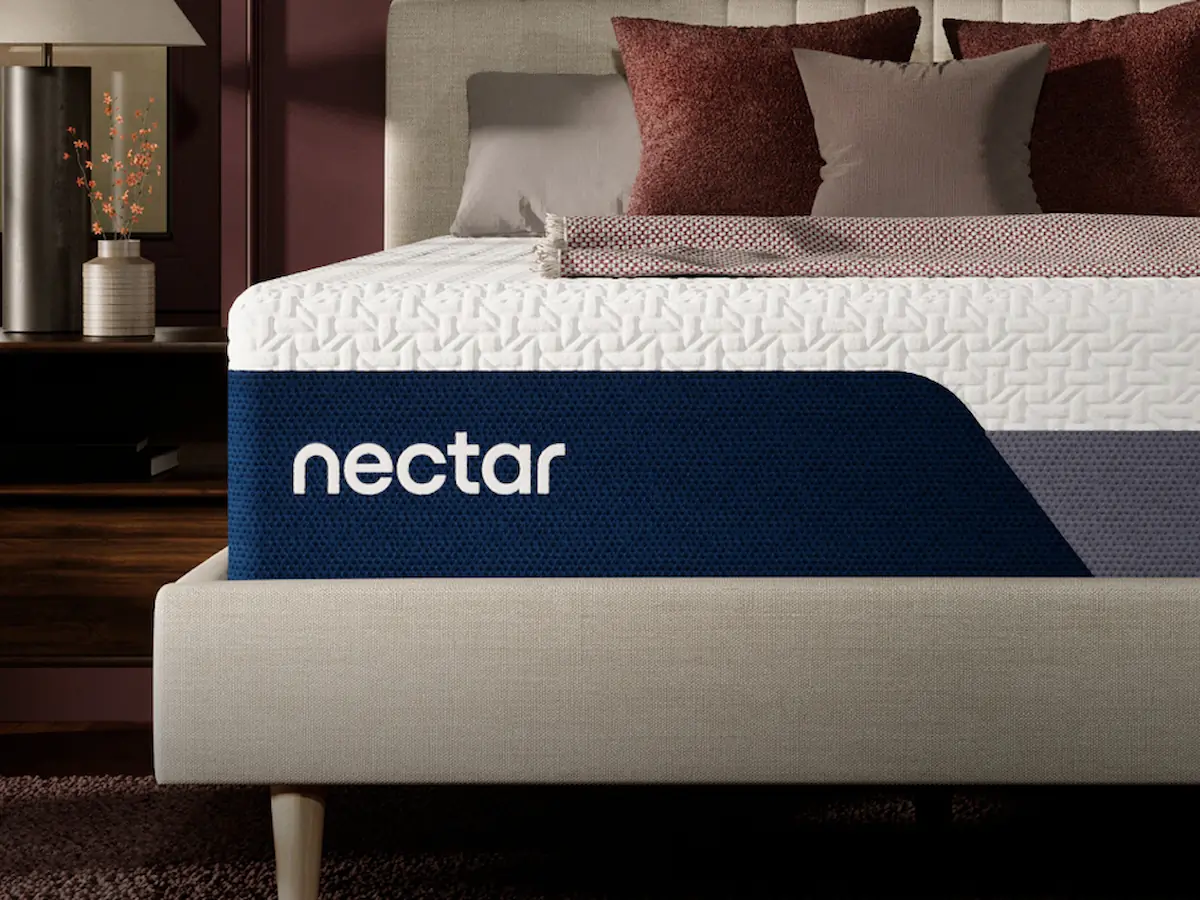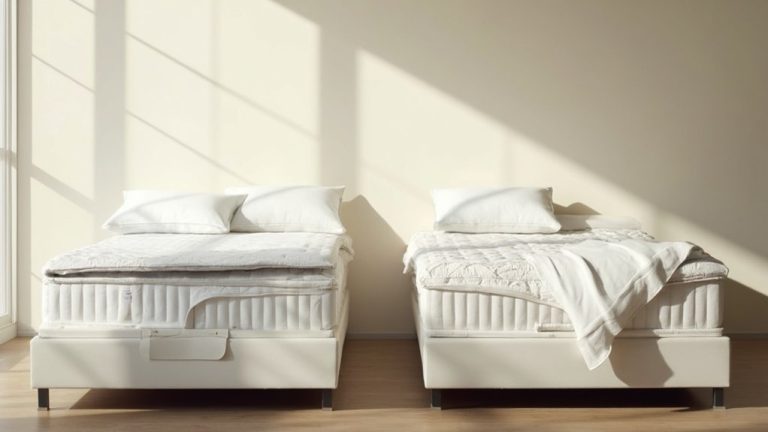Nectar Vs Saatva
When choosing between Nectar and Saatva, you’ll find distinct differences in design and value. Nectar offers an all-foam construction with superior motion isolation and pressure relief, priced at $1,099 for a queen size. In contrast, Saatva features a hybrid design combining coils and foam, providing better temperature regulation and enhanced support for stomach sleepers at $1,795. Nectar excels in motion isolation and pressure relief, while Saatva offers stronger edge support and better cooling. Your choice depends on your sleep preferences – side sleepers typically prefer Nectar’s contouring feel, while back and stomach sleepers often favor Saatva’s zoned support system. Exploring each mattress’s specific features will help determine your ideal match.
>>SAATVA MATTRESS 20% OFF CLICK HERE<<
Core Design and Construction
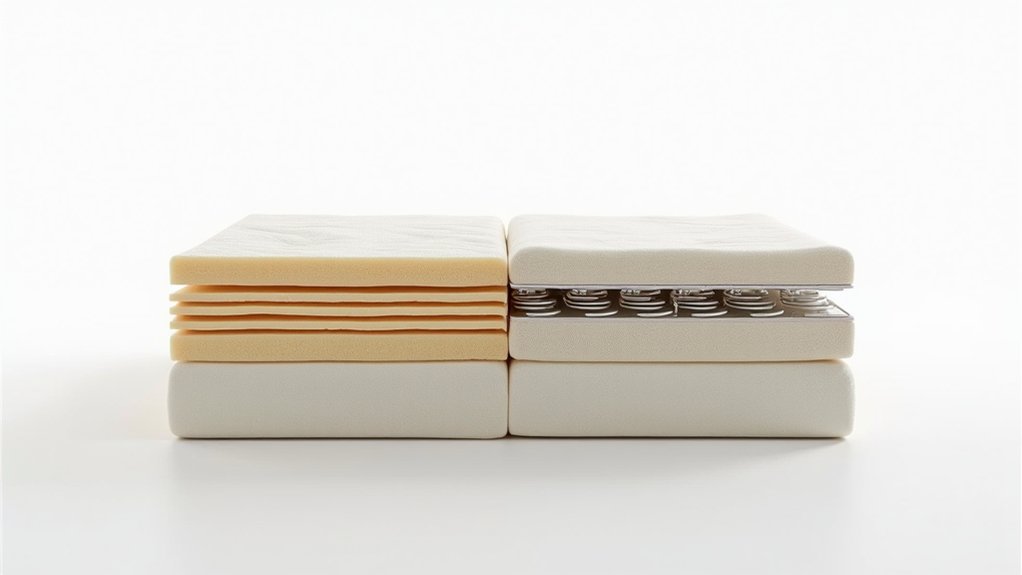
When it comes to core design, Nectar and Saatva take distinctly different approaches to mattress construction. Nectar utilizes an all-foam design with multiple memory foam layers, while Saatva combines foam and coil technology in a hybrid structure.
You’ll find Nectar’s construction features a tencel cooling cover followed by three specialized memory foam layers. The top layer consists of quilted gel memory foam for comfort, followed by a gel-memory foam layer for support, and an adaptive shifting layer. With up to 40% off, Nectar’s premium construction is now more accessible than ever.
These rest on a high-density polyurethane foam base that provides foundational stability.
In contrast, Saatva’s design incorporates individually wrapped coils as its primary support system. You’ll notice this creates a more traditional mattress feel with enhanced breathability and edge support.
The coil system is complemented by comfort and shifting foam layers, topped with your choice of materials depending on the model.
Both manufacturers prioritize quality materials, with Nectar using CertiPUR-US Certified foams and eco-friendly tencel, while Saatva often incorporates natural materials like organic cotton and latex.
You’ll typically find Saatva mattresses are thicker due to their coil construction, offering more height than Nectar’s all-foam design.
Comfort and Support Features
Building upon their distinct construction approaches, both Nectar and Saatva offer unique comfort and support features that shape your sleep experience.
When you choose Nectar, you’ll find targeted pressure relief through memory foam that contours precisely to your body’s pressure points. The therapeutic gel memory foam adds extra pressure relief for shoulders and hips.
Nectar’s comfort features center on its motion isolation capabilities, making it an excellent choice if you share your bed. The all-foam construction absorbs movement effectively, so you won’t feel your partner’s nighttime adjustments. You’ll also experience consistent body contouring as the gel-infused memory foam distributes your weight evenly across the surface.
For support, Nectar provides a medium-firm feel, rating 6.5 on the firmness scale. The 7-inch high-density base foam creates a stable foundation, while the reinforced edges allow you to use the entire sleep surface confidently.
You’ll find this mattress particularly suitable if you’re a side sleeper or have a lighter body type, as it delivers plush support without excessive sinkage. However, if you’re a heavier sleeper, you might want to contemplate alternatives, as deep compression could affect your sleep quality.
Temperature Management
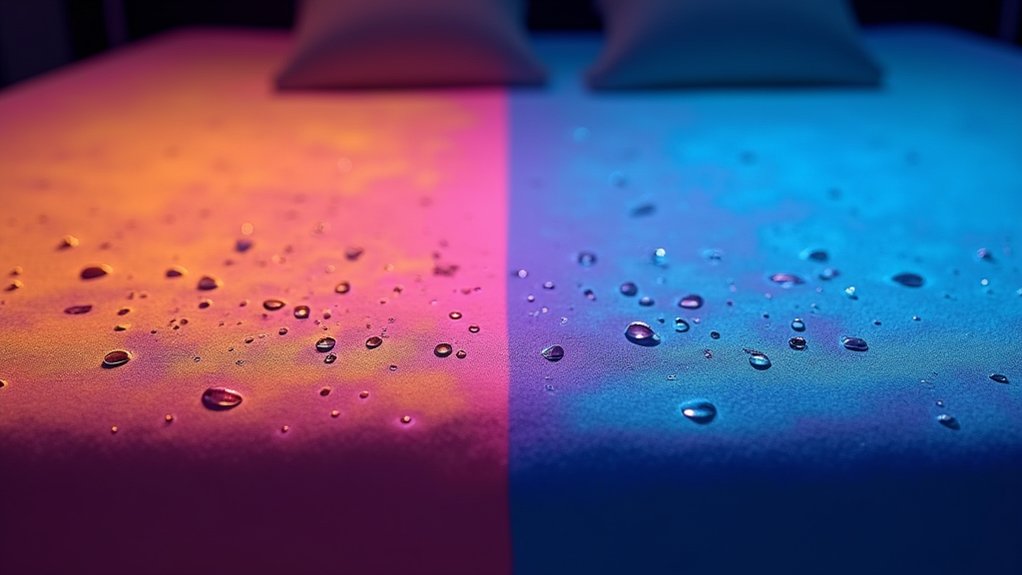
Temperature control remains a critical factor in mattress selection, and both Nectar and Saatva approach this challenge differently.
Nectar employs a quilted poly-blend cover with heat-wicking properties and beaded gel memory foam that uses phase change technology to convert body heat into cooler temperatures. The CertiPUR-US certified foams ensure safety while maintaining temperature regulation properties.
While Nectar’s cooling performance scores a respectable 4 out of 5, you’ll find that Saatva’s models generally maintain lower temperatures.
Saatva’s hybrid designs, featuring coil systems and breathable organic cotton covers, provide superior airflow compared to Nectar’s all-foam construction.
If you’re a chronic overheater, you’ll want to take into account that Nectar’s cooling capabilities, while better than typical foam mattresses, may not meet your needs.
The mattress performs best in rooms between 68-70°F, and you can optimize its cooling efficiency by using appropriate bedding and a mattress protector.
For enhanced cooling, you might want to explore either the Nectar Premier Copper model or Saatva’s hybrid options, which offer more effective temperature regulation through their coil-based designs and premium cooling materials.
Motion Transfer Performance
Motion transfer emerges as a key differentiator between Nectar and Saatva mattresses, with test results showing distinct performance variations.
You’ll find that both Nectar models considerably outperform the Saatva in motion isolation capabilities.
The Nectar Ultra leads the pack with impressive results, showing 20% less motion transfer than average, while the Nectar Hybrid demonstrates similarly strong performance with only 1% more than average.
The Hybrid’s motion transfer acceleration of 8.93 m/s² contributes to its excellent performance ratings.
When you’re sharing your bed, you’ll notice that movement on one side barely affects the other, thanks to Nectar’s strategic foam layering.
Saatva’s performance tells a different story.
You’ll experience moderate motion transfer due to its coil-on-coil construction, which earned it a 3 out of 5 rating.
While it handles minor movements adequately, you’re likely to feel your partner getting in and out of bed.
For couples and light sleepers, this difference matters considerably.
If you’re particularly sensitive to movement, you’ll want to lean toward either Nectar model.
The Ultra’s all-foam design and the Hybrid’s foam-coil combination both offer superior motion isolation compared to Saatva’s traditional innerspring approach.
Price Point Analysis
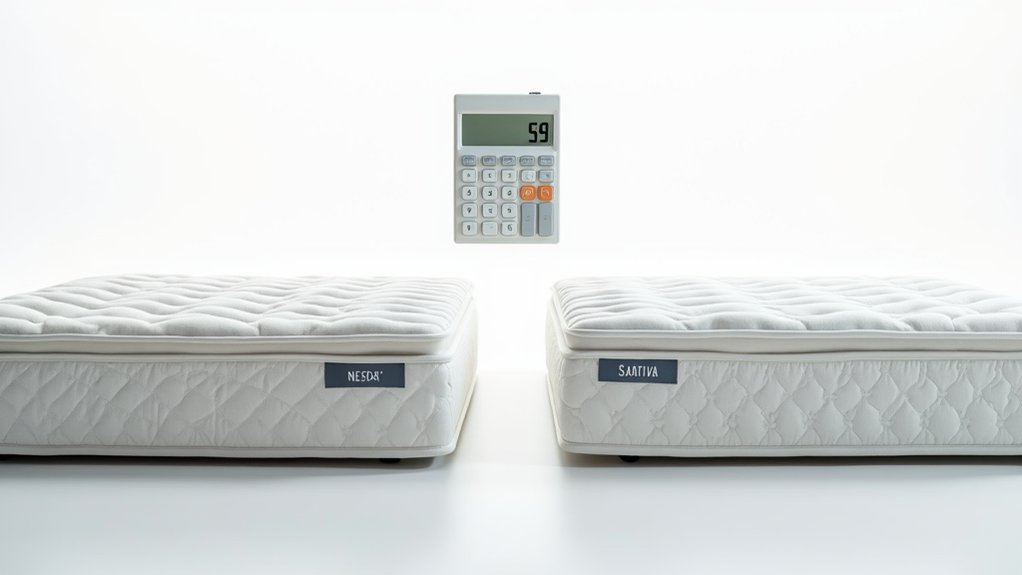
Price emerges as a significant factor when comparing Nectar and Saatva mattresses, with Nectar consistently offering more budget-friendly options across all sizes.
You’ll find Nectar’s queen mattress priced at $1,099 before discounts, while Saatva’s queen comes in at $1,795. With typical discounts, you can secure a Nectar queen for $699, compared to Saatva’s discounted price of $1,526.
These price differences extend across all mattress sizes, with Nectar offering more aggressive discounts of up to 40% during sales events. Both brands provide outstanding value with their 365-night trial periods, allowing customers a full year to test their mattress.
When considering financing options, Nectar provides more affordable monthly payments starting at $58, while Saatva’s begin at $95.
Additional costs also factor into the overall value proposition. While Saatva includes free white glove delivery and mattress removal in their base price, Nectar charges $199 for these services.
However, Nectar offers free standard shipping, whereas Saatva charges a $99 return transportation fee.
During major sales events, you’ll typically find deeper discounts with Nectar, which regularly offers 25-33% off plus additional perks like free bedding bundles, making it the more economical choice overall.
Sleeping Position Compatibility
Sleep preferences play a crucial role in choosing between Nectar and Saatva mattresses, as each brand caters differently to various sleeping positions.
If you’re a back sleeper, both mattresses offer strong support, but Saatva edges ahead with its versatility across all weight categories. You’ll find Saatva’s luxury firm option particularly beneficial for maintaining proper spinal alignment.
Nectar excels for lightweight and average-weight back sleepers, providing targeted pressure relief around the lower lumbar region. The adaptive memory foam layer makes it especially effective for those with back pain.
For side sleeping, Nectar’s memory foam construction makes it the better choice, especially if you’re a heavyweight sleeper needing deep contouring.
However, if you’re a lightweight side sleeper, you might find Nectar too firm. While Saatva’s euro pillow top offers plushness, it doesn’t provide the same level of pressure relief for side sleepers.
Stomach sleepers will appreciate Saatva’s zoned support system and hybrid design, which excel at maintaining proper alignment.
Nectar performs well for lightweight and average-weight stomach sleepers but may not provide adequate support for heavyweight individuals.
Combination sleepers can’t go wrong with either option, as both mattresses offer good responsiveness for position changes, though Saatva’s hybrid design provides superior bounce and mobility.
